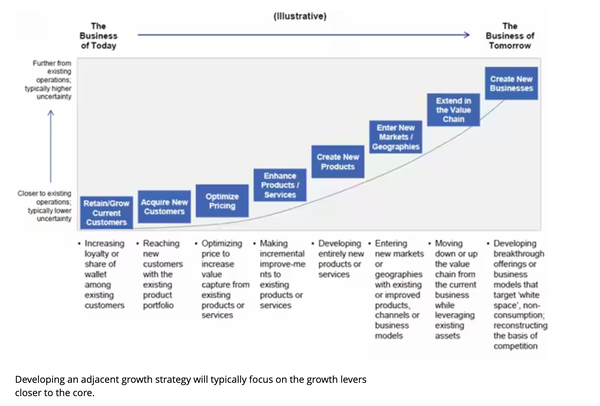Finding Opportunities in Adjacent Markets by Thinking Outside the Box
While expanding into adjacent markets is not without risk, you will leverage your business’s existing capabilities, competencies, and strengths with adjacent markets.
You might also like…
Content Creators and Social Media Influencers in the Digital Economy
What does the state of influencer marketing look like in 2024? Discover how content creators and influencers are enmeshed in the digital economy....
Qualitative Market Research: The Complete 2023 Guide
Qualitative market research helps collect key non-numerical data for analysis. Learn the qualitative research benefits, methods, and more. Inside...
The Importance of Demographic Survey Questions in Surveys
Learn why a foundational component of surveys is demographic questions, which enable you to understand the nature and characteristics of your respondents...
Introduction
When looking for ways to grow your business, the old adage is, “Look for the white space.” But white space opportunities can be very risky and expensive because they are farther away from your core business. While expanding into adjacent markets is not without risk, you will leverage your business’s existing capabilities, competencies, and strengths in those (adjacent) markets. You will just be addressing them to a new audience.
Let’s start with the basics: what is an ‘adjacent market?’ An adjacent market is a market that is related or connected to a business’s existing market but is not within the core market in which the business operates.
For example, a business that primarily sells smartphones may expand into the smartwatch market, which is closely related to the core business. This is not the same as a replacement competitor, which offers a product or service that customers can purchase as a replacement for what you offer (resources they could have used to buy from you).
Adjacent markets bring in new customers to your business by leveraging the original core business. As strategist Drew Boyd notes, “The most common misunderstanding about adjacent markets is that it’s all about exporting your existing products to new customers. Not true. The secret to adjacent markets is to export your skills and capabilities, not products and services. It’s taking your core competencies and creating new value with new customers.”

Once you decide you want to evaluate adjacent markets for opportunities, there are several places to look:
- What is the Value Chain? Most businesses operate with a larger value chain that produces the end solution for the customer. So, look to the businesses under, beside, and above you on the chain. There could be opportunities for you to move into providing more of the processes along the chain.
- Introduce New Products and Services. Understand your customers, and identify opportunities to meet additional needs.
- Explore New Distribution Channels. Are there ways to reach new customers through new channels? For example, with the decline in retail shopping, many brands are looking to get into grocery stores. Do you have a similar opportunity?
- Expand your Geography. If you’re not already a global player, is it possible to expand into adjacent geographic markets?
A more comprehensive market segmentation is one place where market research can help. However, market research can identify adjacent markets by better understanding your customers and their purchase journey. Explore the other vendors they support. Look for unmet needs. And once you have identified an adjacent market opportunity, do additional research to explore the potential and the risk.
And speaking of risk, there are several potential pitfalls (aside from the financial) to be aware of as you evaluate new opportunities:
- How will entering an adjacent market impact the current core business? The extent of organizational change needed to enter an adjacent market goes far beyond the financial costs. From hiring and training workers and salespeople prepared to service and sell into the new market, there may be other impacts on your business in terms of operations or culture that you must consider when going down the innovation path.
- How will current channel partners react to the change? Entering an adjacent market could impact your current business relationships, not necessarily for the better. Will you be competing with your partners? How will that affect the existing core business?
- Will your Entry Impact the Adjacent Market? You know what the potential is, and you have evaluated the risk, but there is the possibility that your strategy might dramatically change conditions in the adjacent market. How will your new competition react? How will customers and potential customers react?
- Are there any legal or regulatory ramifications of entering the adjacent market? By changing the competitive dynamics in the new market, you may create a condition that triggers liability.

Summary
Expanding into adjacent markets might be an excellent opportunity for businesses to reach new customers and increase revenue. But before you jump in, do your research so that you understand the big picture. Market research, competitive intelligence, secondary research – put all your tools to work to give you the information needed to make the optimal decision.
Looking to Expand and Grow in 2023?
Let OvationMR help you evaluate adjacent market opportunities.
Follow
OvationMR

Bart Borkosky
Author
Bart is Chief Research Officer at OvationMR and is responsible for online panel and Online Sample Data Quality. He also consults with clients on sampling design for various types of online research campaigns. Bart can be reached at Bart.Borkosky@ovationmr.com
OvationMR is a global provider of first-party data for those seeking solutions that require information for informed business decisions.
OvationMR is a leader in delivering insights and reliable results across a variety of industry sectors around the globe consistently for market research professionals and management consultants.

Need help with new insights?
We are ready to offer you:




